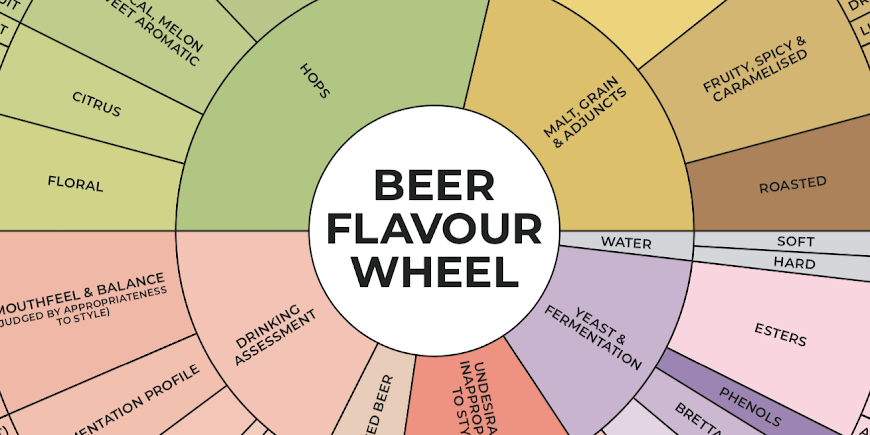Every
year I write one of these posts. I never get anything right, but it’s worth a
punt...
Keg
beer will not rocket in general. A few breweries will expand into using kegs,
and others will expand current keg ranges, and they will sell these to the
destination beer bars around the UK. A 6.5-7.4% IPA on keg will become core to
some brewery ranges. Only about 10-15 breweries will do this properly and do
this well.
As
some breweries make beers to satisfy the geek end of the market, and see success
from doing it (whether cask, keg or bottle), so all breweries will need to look
hyper-locally and nail their nearby market with whatever beers will sell best
there, probably a sub-4% pale cask session beer. Given the massive competition
of breweries in the UK now, these beers need to be really good for a brewery to
survive.
Cask
beer is very important to British beer and always will be. Kegs add to that and
are not some kind of crazy, cask-killing beast. The cask vs. keg debate is
tiresome now. The two need to co-exist because they do different things. With
900 cask breweries in the UK, why fear 10-15 breweries who want to use kegs to
dispense some or all of their beers?
The
Olympics are the big thing in 2012. I hope we don’t get a load of gold or
bronze Olympic-themed ales released for the summer. I hate tacky ‘occasion’
beers – are any of them ever any good?
Because
of the Olympics, plus Euro 2012, bottles will be important as more people want
to drink at home. This summer will be the summer of home drinking. Breweries
had better get filling those bottles.
This
is an interesting one: big breweries taking a craft focus. Sharp’s are under
MolsonCoors and I expect some good things from Sharp’s in 2012. As well as
this, Brains and Thwaites are both opening smaller plants to brew beers outside
of their core ranges. Shepherd Neame did this a few years ago but I rarely hear
about it anymore, which is a shame. This approach from the regionals and
nationals is good to see. I hope the beers are good.
Micro-beer
festivals. The 400-cask beer festival is always fun but I love the idea of
smaller-scale, better-quality festivals. The Snowdrop Inn showed how it’s
possible. I also think themed beer festivals, or events based around certain
beer styles, will work well, as was seen with IPA Day in 2011. Brewery
showcases and tap takeovers are an extension of this – and they are events to
get people to the pub.
Food
and beer will make it big in 2012! I hope. It’s been a long time coming but
we’re getting closer and closer to people really taking it seriously. If beer
is going to be taken seriously in the mainstream then it’ll be alongside food
to begin, in the same way that wine attached itself to the dinner table in the
1980s. To get beer to that point it will need a TV programme and major
newspaper columns but there are people around who can do those things.
Now for the beers... We’ve had IPAs,
we’ve had Black IPAs. Some breweries have veered towards Belgium or played with
Belgian yeasts. We’ve had more IPAs, red IPAs, Belgian IPAs and double IPAs.
But what beers will come in 2012?
I think straight-up 6.5-7.4% US IPAs
will be big still. I’m certainly not done drinking them. I just hope they go
into kegs and not casks (or at least go into both).
I think forward-thinking brewers will
look backwards at old recipes and styles. Fuller’s do a great job with this
already, The Kernel is doing it, Thornbridge and Otley have done some – it’s
either taking old brewing records and bringing them back to life or it’s
rejuvenating old beer styles like Burtons and old ales.
American hops are still hot but their
supply is tight in 2012. This might see some more beers made with English hops.
I think by the end of the year there’ll be a beer or two (probably IPAs) that
are hopped with just English varieties that are getting us all talking. This
might also connect with the previous point of rejuvenated recipes...
I’m personally going to try and drink
more Belgian beer in 2012. I’ve let it slip out of my sight in the last two
years but I want to drink more. As for British breweries playing with Belgian
inspiration... maybe. I don’t think we’ll see a Saison explosion but I expect some
brewers will experiment with styles like tripels and Belgian blondes.
Best bitters will get lighter and
hoppier.
What
do you think will happen in 2012? What beer styles will we see more of? What
breweries do we expect to taste good things from?









